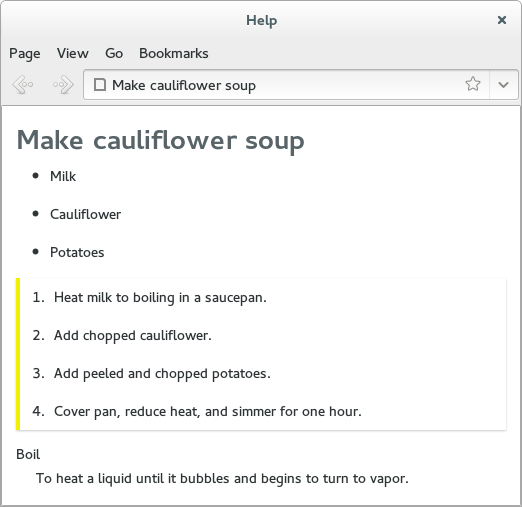Lists
About
A list is a block element. It can have a title. It contains a number of item elements. List elements allow for nesting of formal block elements such as paragraphs, notes, and other lists.
Basic lists
Lists can be created with the <list> element. The default list is unordered, with list items marked with bullets or other glyphs. Each item in the list should be enclosed in <item> tags, and the content of each item must be enclosed in <p> tags or other block element tags.
Basic list example
<list> <item> <p>Milk</p> </item> <item> <p>Cauliflower</p> </item> <item> <p>Potatoes</p> </item> </list>
Step lists
The <steps> element will create an ordered list that describes a set of tasks in sequence. Each item in the list should be enclosed in <item> tags, and the content of each item must be enclosed in <p> tags or other block element tags.
Step list example
<steps> <item> <p>Heat milk to boiling in a saucepan.</p> </item> <item> <p>Add chopped cauliflower.</p> </item> <item> <p>Add peeled and chopped potatoes.</p> </item> <item> <p>Cover pan, reduce heat, and simmer for one hour.</p> </item> </steps>
Terms lists
Use the <terms> tag to create a list of terms along with the corresponding definition of each term. This is useful when you are trying to create a glossary of related technical terms.
Terms list example
<terms> <item> <title>Boil</title> <p>To heat a liquid until it bubbles and begins to turn to vapor.</p> </item> </terms>

Learn more
For more on Mallard lists, see http://projectmallard.org/about/learn/list.





